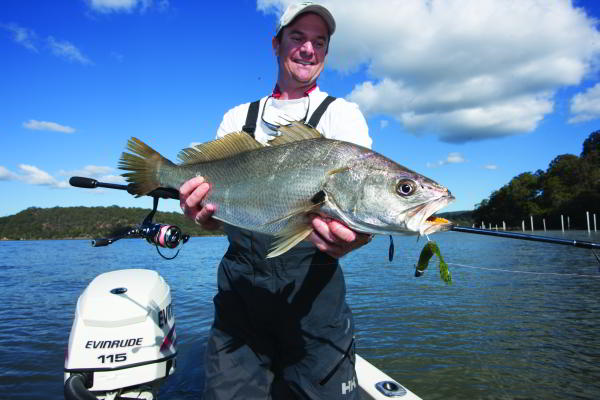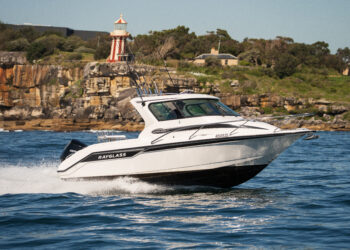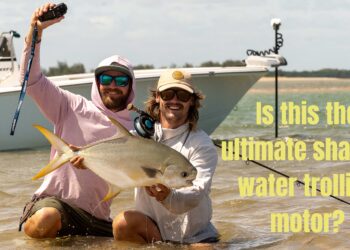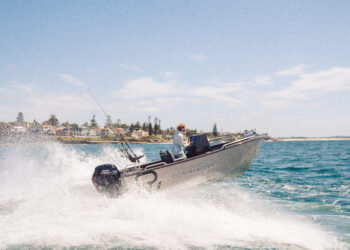About six months ago I made a switch that I never thought I would.
With angling I always strive to use the most technologically advanced gear I can get my hands on – the most up-to-date reels and latest lures – but here I was choosing to go back to a two-stroke outboard!
Those who know me best were laughing at the concept because they knew I was a devout Suzuki four-stroke convert and that I’d spent countless hours trying to convince anyone who would listen that this was the only choice to make.
However, it didn’t take long to realise the decision may not be too drastic. The modern fuel injected two-strokes are every bit as sophisticated as their four-stroke brethren and while I would never diss my beloved Suzuki there are some significant differences in the two powerplants that have had a dramatic impact on how I fish and how my boat handles.
This comparison review is merely an opportunity to discuss the differences of each outboard I have had experience with to allow punters out there looking for similar outboards to make informed choices.
Performance
This area probably isn’t a fair fight as the E-TEC is a 115hp and the Suzuki was only 90hp. That said, the move to the 115 obviously supplied me with significantly greater speed across the entire rev range but most noticeable was down low where the extra grunt of the DI two-stroke provided very effective holeshots.
The 90hp Suzuki struggled to push out 33 knots fully laden while the Evinrude pushes out a little more than 38 knots at WOT with a full load.
With one person and no equipment I’ve had my Full Boar up to 42 knots and at this speed it feels like terminal velocity. I don’t think the design of my boat could handle much more speed, so I’d say the 115 is the perfect match in terms of maximising hull performance.
Probably the most noticeable feature difference lies in the torque delivery. Two-strokes are known for having extra grunt, as you make power on every second stroke instead of every four.
The E-TEC gets my reasonably heavy 5.5m fibreglass boat up on its pad at around 10 knots at 3000rpms while the four-stroke revved out to 4000rpms and 13 knots to achieve the same result.
While this may sound inconsequential, in fact slower planing speeds has meant I’m able to handle swell better as I can ride between waves on the plane whereas before it was either plough ahead or fall off the back of waves. Either can be dangerous if the conditions get big in a tournament-style open boat.
Greater torque has also meant I now can fish four people and their gear in my boat with the E-TEC still providing a decent level of performance. The old outboard with four on board refused to get on the plane.
On the economy front, though, things swing a little and the advantage goes back to the four-stroke. Suzukis are known to be fuel misers and while the E-TEC is no guzzler, the temptation to run it flat out for thrills and giggles is too great and thus consumption is compromised.
The Suzuki didn’t have any smart gauges like I have now with the E-TEC so fuel rate comparisons are anecdotal but I did have my four-stroke for five years so I think I’m well placed to make comment.
On a standard trip where I previously used up 30 litres, I would now use 40 litres. This is 25 per cent more consumption, but like I said wherever I go now I do it flat out because of the fun factor.
If you kept the E-TEC running in a more economical range, at, say, 4800rpms at 30 knots, that discrepancy wouldn’t be so great.
The weight of the outboard should also be mentioned. The old DF90 was a heavy beast and this caused the boat to porpoise at near zero trim. Now, with a lighter load on the transom, there is no noticeable porpoising at any trim or speed.
This is an absolute pleasure.Getting full use of the trim while underway allows me greater flexibility to handle the conditions. I trim it down in the rough stuff and right up in flat calm conditions for a more comfortable all round ride.
The last mention on performance should be around the instant throttle response of the E-TEC, which provides excellent holeshot.
The stratified slow-speed combustion mode coupled with a high-speed homogeneous system (just read the brochure!) really kicks you back in your chair. For car enthusiasts, it’s like a sequential cam, like that of the V-Tec, cuts in and the power delivery is instantaneous.
Like I said, it’s fun stuff.
Convenience & Pleasure
Because I was so used to operating a four-stroke, for the first few months of using the E-TEC I never checked the level of the oil – I just forgot I had to do it.
Luckily the E-TEC sips minimal oil and my six-litre tank was still half full after numerous trips.
The downside is obviously lack of convenience and you do have to purchase E-TEC specific two-stroke oil, which isn’t cheap. I have a deck fill on mine for easy refilling but without an oil gauge it can be a hassle to refill.
In terms of clean running I can’t fault either outboard. The E-TEC runs as clean as a four-stroke so the myth that two-strokes are smoky old things has been well and truly debunked.
At idle both outboards have a running noise that is barely perceivable but once both get up and boogie the E-TEC has a louder, throatier note. For the rev head out there it’s an addictive noise but it’s difficult if you want to hold a conversation while running flat chat.
Servicing is another advantage of the E-TEC. While E-TECs are vaunted as requiring no servicing for three years or 300 hours,
I personally won’t be rolling that dice. Mine has just come back from its initial 100 hours service and I was pleasantly surprised at the reasonable cost.
Four-bangers are expensive to service as they have far more moving parts so it stands to reason they cost more to look after. That said, when you factor in the cost of two-stroke oil over the year plus servicing, the costs for both outboards are very similar.
One thing I did like was the no break-in period with the E-TEC. It felt odd that I could run the E-TEC flat chat straight of of the box but it’s how you do it apparently.
It ties in with Evinrude’s mantra of keeping you “out on the water longer”, and I like that philosophy. The Suzuki had a run-in period of 20 hours.
The other great thing about having more power is the ability to use the boat for other purposes. I don’t think I have ever taken my boat out for anything other than fishing. Now I head down the river for a joyride or pull out the biscuit and tow the kids around.
The old four-banger didn’t quite have the grunt to pull off those kinds of stunts but the DI two-stroke has opened up a new area of boating for me, and that in itself has been a winner.
If you are in the market for a mid-powered outboard I hope this gives you a brief insight into some things you need to consider.
If you want an outboard that is miserly on fuel, whisper quiet throughout the entire rev range but maybe lacks a bit of punch, then go a four-stroke.
If you’re looking for an outboard that provides a thrilling ride and is capable of pushing high speeds with heavy loads, then a DI two-stroke such as the E-TEC is the choice.
It’s horses for courses but when it comes to my personal choice, the E-TEC has opened up new possibilities in both fishing and recreation. That, to my way of thinking, has made this a worthwhile experiment. ¦
Editor’s note: At the time of publication, the price for a 90hp Suzuki four-stroke was about $13,078 and the E-TEC 115 was available for $15,500. See www.suzukimarine.com.au and www.evinrude.com/en-au for more details.
This story was first published in the Fishing World October 2013 issue.





















